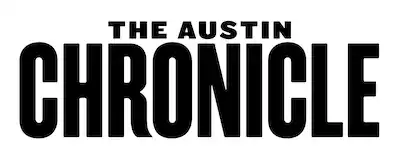https://www.austinchronicle.com/arts/2017-01-27/orna-feinstein-treetopia/
"Orna Feinstein: Treetopia"
The bubbles and circles of Feinstein's monoprints are sophisticated, beautiful, even fun, but they may leave you wanting more
Reviewed by Sam Anderson-Ramos, January 27, 2017, Arts
One takeaway from Orna Feinstein's "Treetopia" is an admiration for its conviction with form, particularly as it is manifested in the circle and the square. The circle and square's ubiquity may be a strength or a weakness here, depending on one's perspective, though there is no doubting the variety of pattern on hand that functions within those confines, patterns which are so finely rendered that they look mass-produced. While Feinstein's circles can seem machine-made (they are, in fact, monoprints), their being circles they also refer to some natural forms, such as planets, so that Seeds and Seductions Installation #87 Through #110, a grid of 24 precise circles, recalls 24 rising suns or floating moons. No two are exactly alike, though almost all of the circles in each frame are disrupted by lines running horizontally and vertically, breaking up the circles like static on a TV screen or radio waves interfering with an essential signal. Eventually, the entire wall looks disturbed, one buzzing circle after another in shades of blue, red, and black.
More compelling may be those like Treetopia #1 which make use of distorted Plexiglas to make her circles into bubbles so that the circles are turned to three-dimensional pustules bulging into the viewer's space. With Treetopia #1, we don't look at the circle but through it and into it. In this case, the monoprint background is blue, red, and black (again), while in others, such as Plastrees #2, the pattern is a grid. The bubbles seem to glide over their surfaces, some larger than others, allowing for a fun viewing experience, though I can't help wanting more – something to push me further into conceptions of pattern and form, something to question or comment on the nature of repetition and the handmade versus the machine-made. The circles and their patterns can only say so much.
When I was a kid, I had a thing called a Spirograph, a set of plastic rulers and drawing tools you could use to draw fancy shapes. You can find commercials for the Spirograph online. "Here's what you can do!" says the song. "Here's what you can do! Hey! Here's what you can do!" A family gathers around to admire the intricate patterns they've made and attach them to the face of the refrigerator. Feinstein's bubbles and circles are far more sophisticated and thoughtful than anything one could do with a Spirograph, but the essential experience of admiring a basic pattern crafted into intricacy is the same. It's the reason fake math in movies can work. Put a bunch of complex-looking diagrams on a chalkboard, have an actor look pensively at them, and voilà!: instant science.
It is probably my own shortcomings and prejudices speaking, but what I would really like is to see something conceptually and formally extreme. Perhaps all 110 Seeds and Seductions prints instead of only 24, or give me 200, or a thousand, or what the hell, a million scattered all over the world or thrown into the ocean. Perhaps a bubble I can stand in, or a bubble I'm forced to stand in. Something that shakes me up or, to paraphrase Wu-Tang's Raekwon the Chef, something that comes provocative. "Treetopia" is well-crafted and beautiful at times, but occasionally it verges on the temperate, which is too bad. I much prefer storms.
“Orna Feinstein: Treetopia”
CAMIBAart Gallery, 2832 E. MLK #111, 512/937-5921.www.camibaart.com
Through Feb. 11
Copyright © 2025 Austin Chronicle Corporation. All rights reserved.
